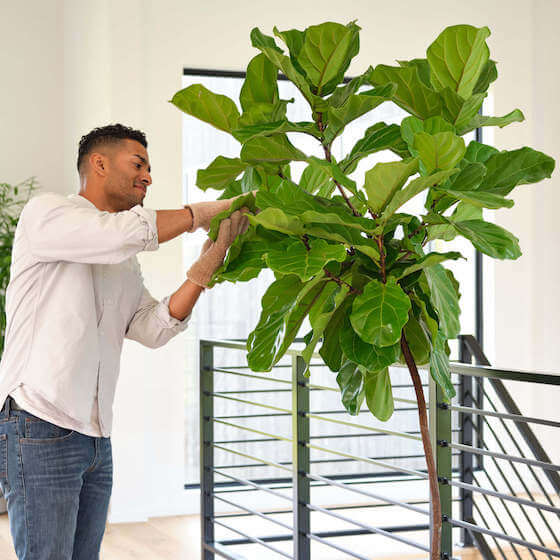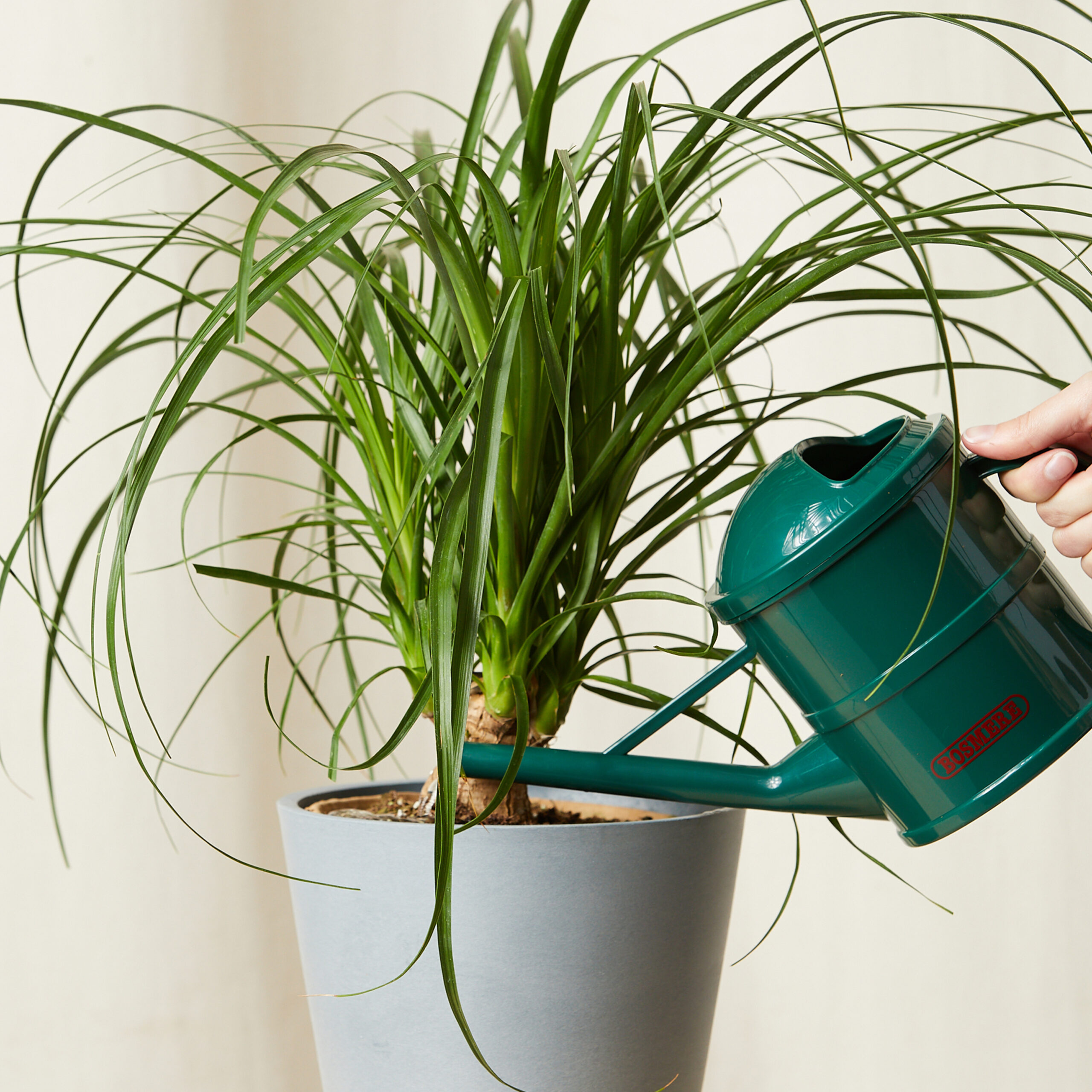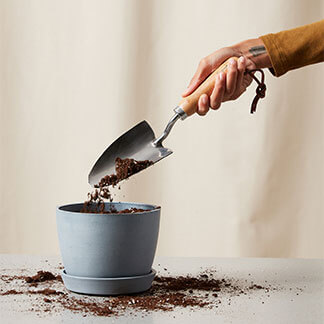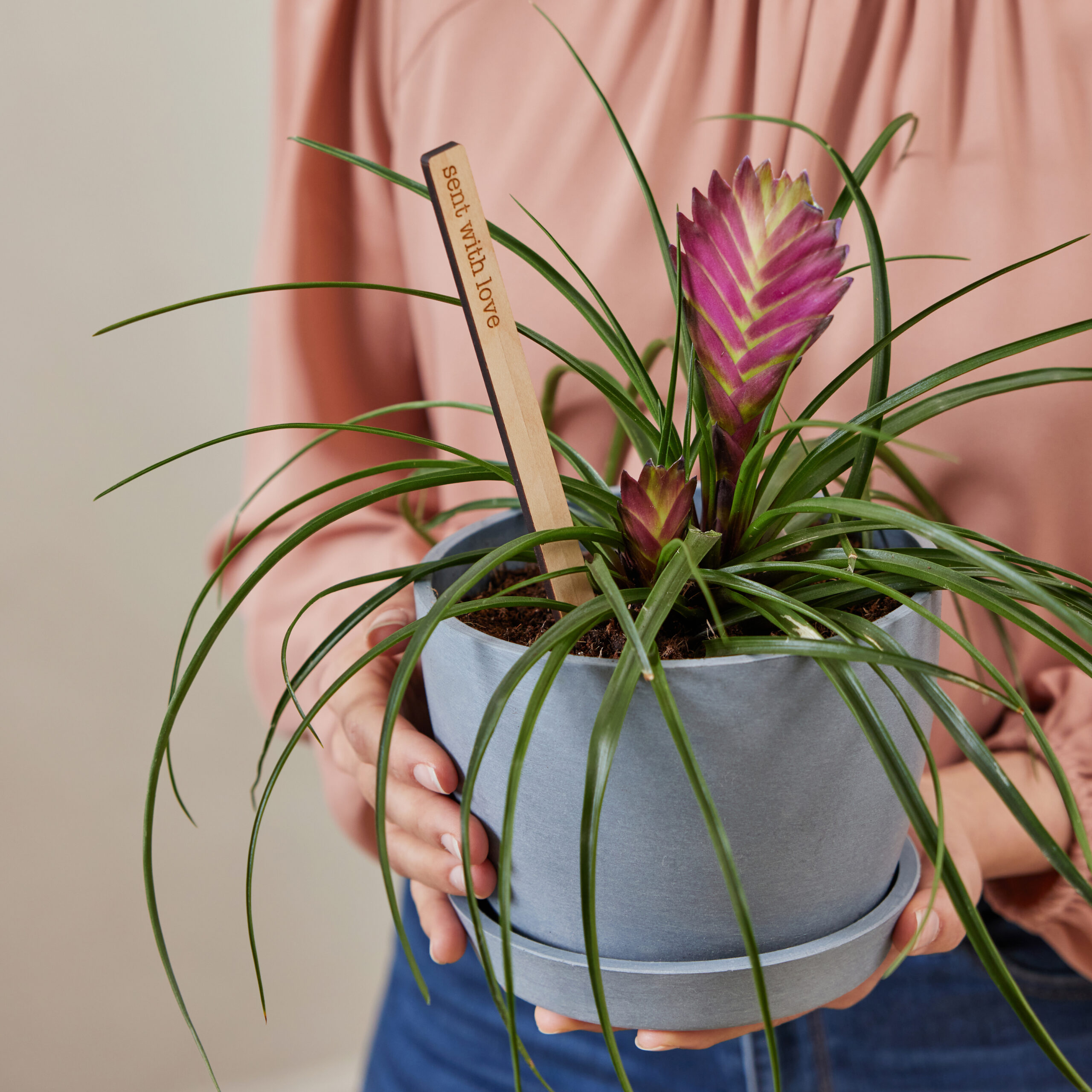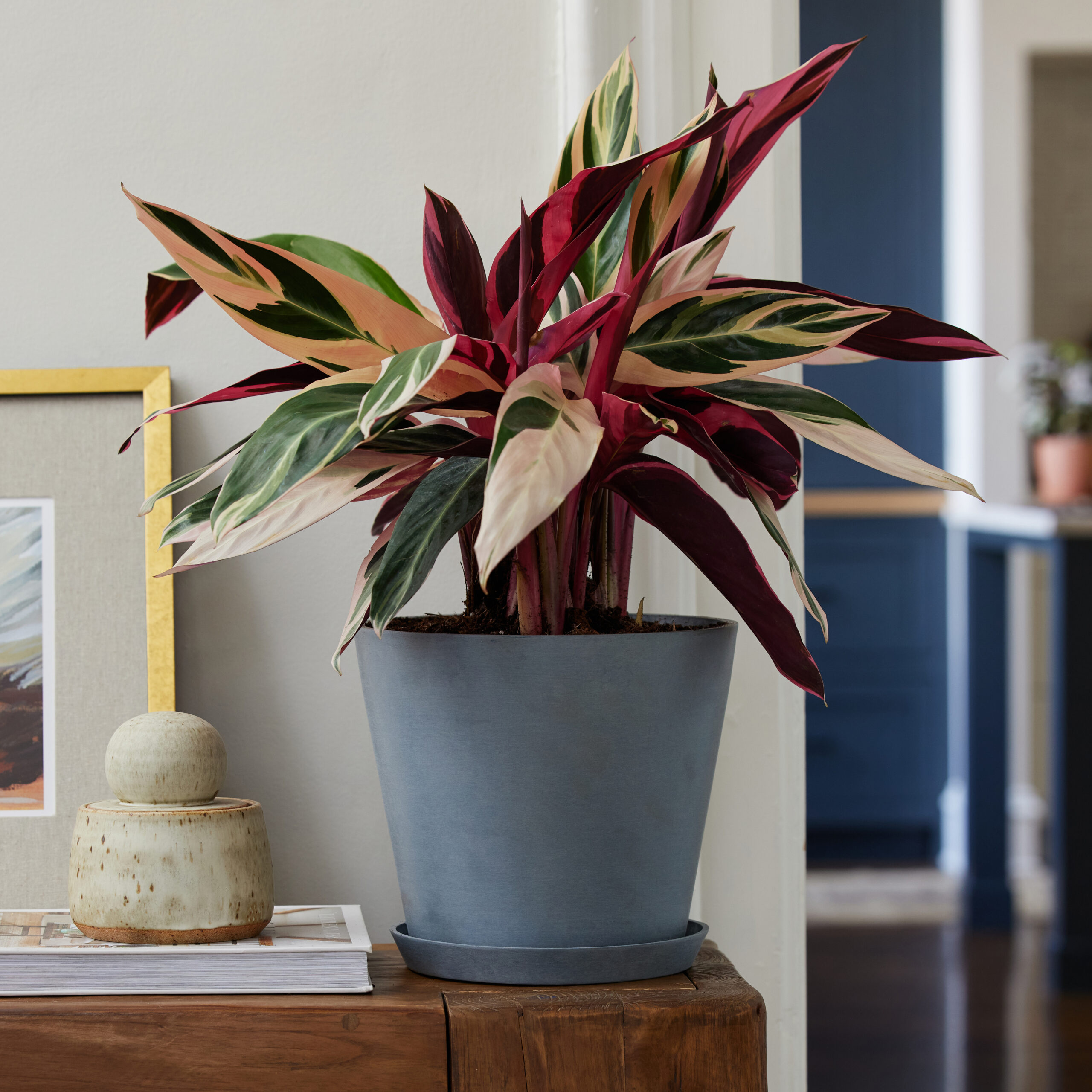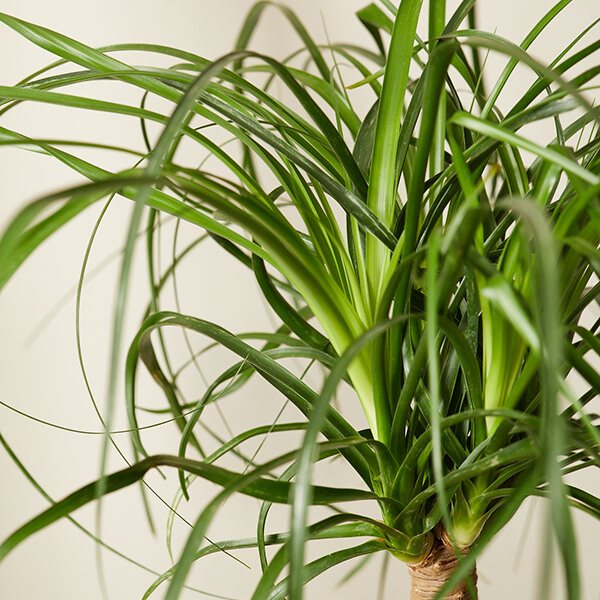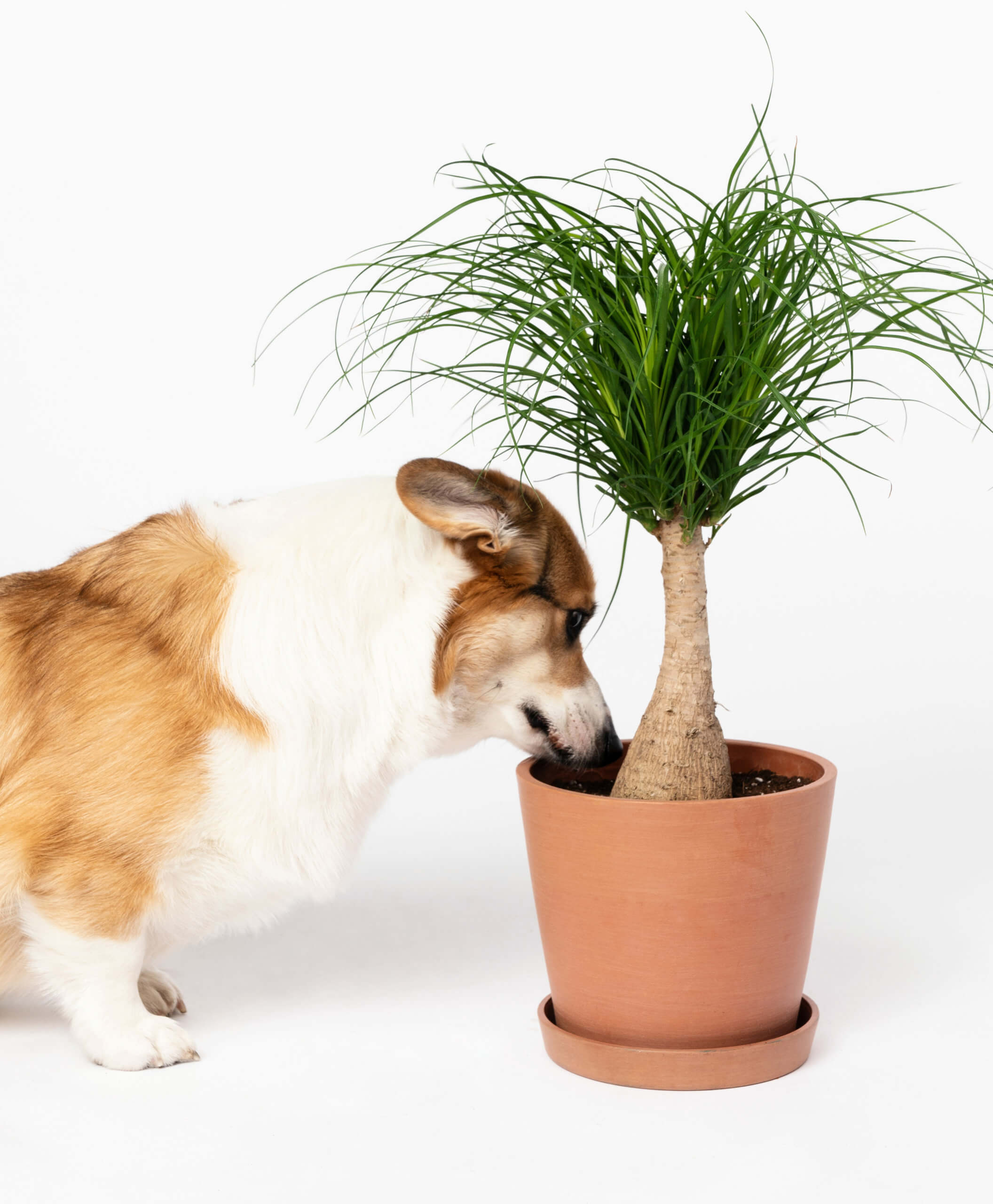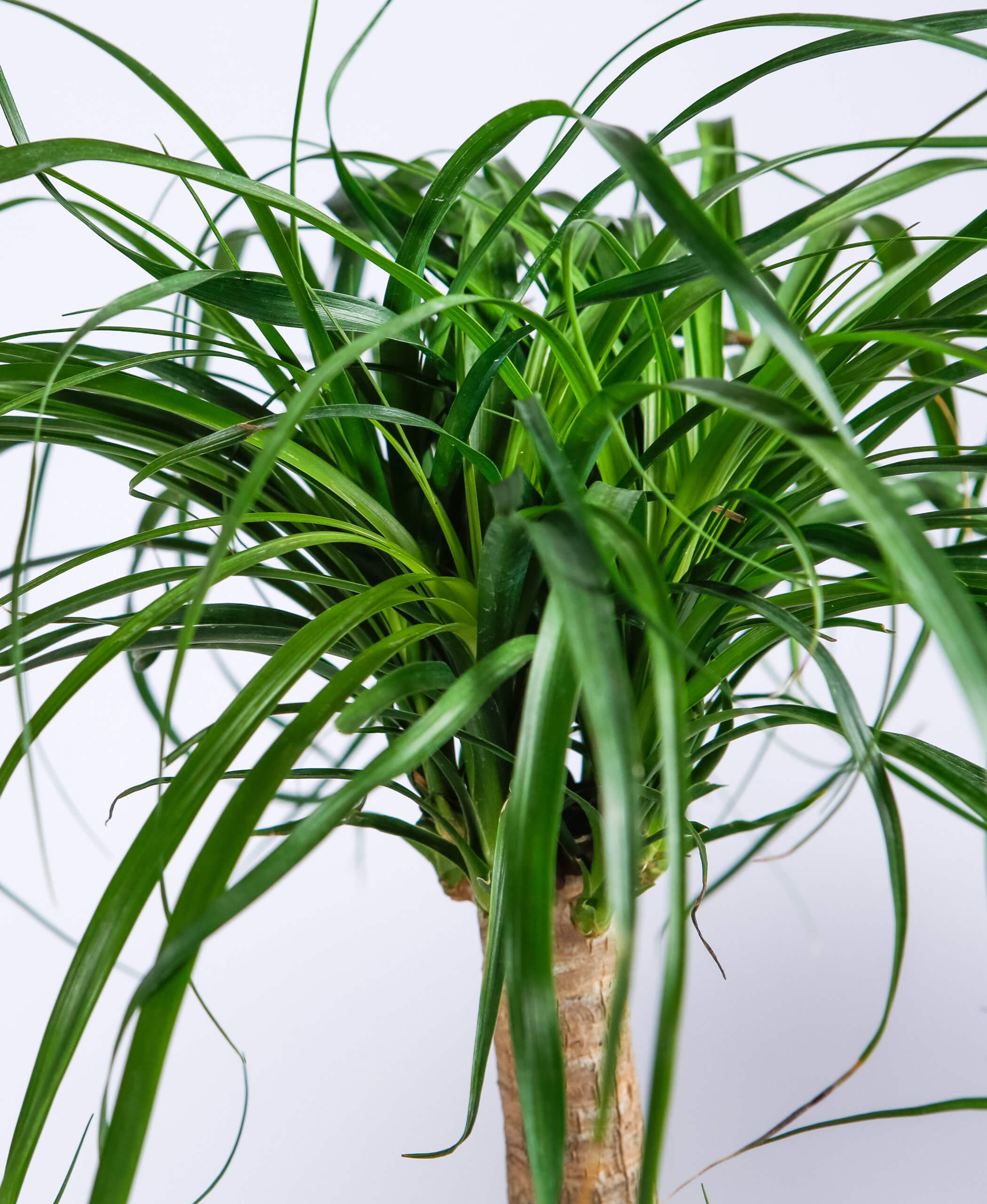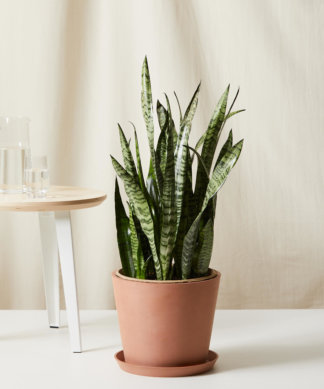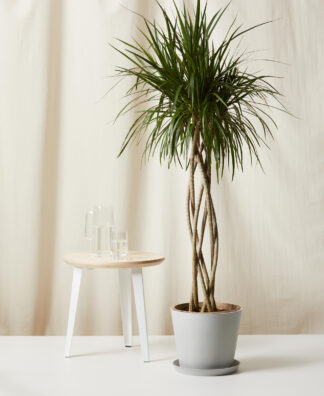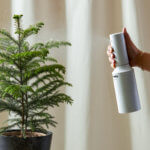How to care for your Ponytail Palm
Use these instructions to care for a Ponytail Palm. This guide will tell you how to water a Ponytail Palm; its light, temperature, humidity preferences and any additional care it might need to help it grow.
Pigtail Palm
Your Pigtail Palm prefers bright indirect light to full sun.
Water your Pigtail Palm when the soil is completely dry. Water until liquid flows through the drainage hole at the bottom of the pot and discard any water that has accumulated in the saucer.
As with most succulents, your Pigtail Palm will thrive in dry conditions. The drier the air, the better!
Protect your palm from cold drafts from windows, air conditioning vents, or doors. This plant prefers normal room temperatures between 60-80 degrees.
For best results, use a general houseplant fertilizer only once in the spring and once in the summer. Any more than that and your Pigtail Palm may develop brown tips on the leaves.
Completely non-toxic to humans and pets.
Your Pigtail Palm leaves are sensitive to injury and tend to get dark at the ends. Cutting back the tips of the leaves is a good way to preserve the appearance of the plant. The key is to use a pair of sharp scissors to cut off just the discolored parts.
Ponytail Palm
The ponytail palm thrives with bright light and can tolerate direct sun all day. It’s happy to live outdoors in the summer where it can soak up the sun! Bring it back indoors when the night temperatures start to dip.
Let the soil volume dry 100% between waterings. Water thoroughly to encourage a healthy root system and discard any excess water in the saucer.
As with most succulents, your Ponytail Palm will thrive in dry conditions. The drier the air, the better!
This plant prefers normal room temperatures between 60-85°F.
For best results, use a general houseplant fertilizer only once in the spring and once in the summer. Any more than that and your Ponytail Palm may develop brown tips on the leaves.
Non-toxic to humans and pets if ingested.
Your Ponytail Palm leaves are sensitive to injury and tend to get dark at the ends. Cutting back the tips of the leaves is a good way to preserve the appearance of the plant. The key is to use a sharp scissors to cut off just the discolored parts.
